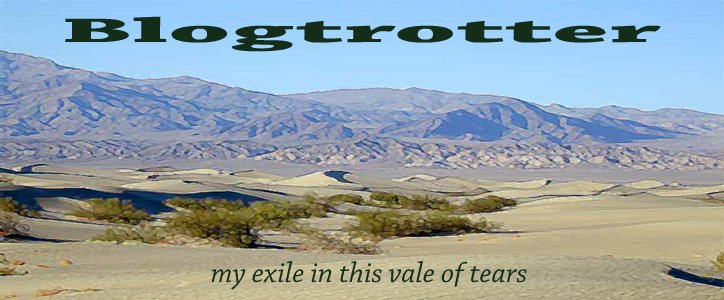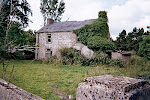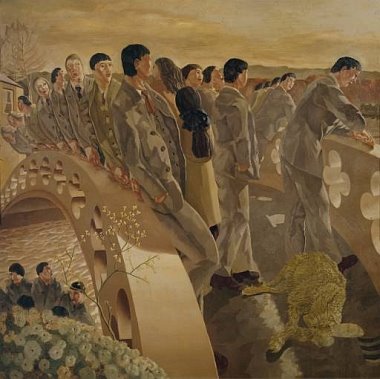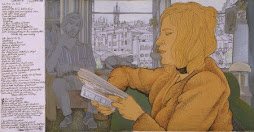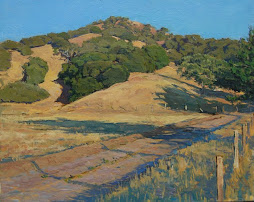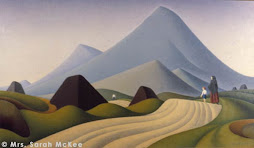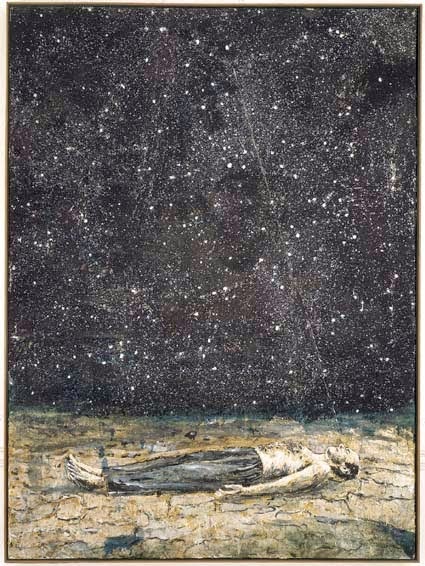 "It is now the month of December, when the greatest part of the city is in a bustle. Loose reins are given to public dissipation; everywhere you may hear the sound of great preparations, as if there were some real difference between the days devoted to Saturn and those for transacting business"
"It is now the month of December, when the greatest part of the city is in a bustle. Loose reins are given to public dissipation; everywhere you may hear the sound of great preparations, as if there were some real difference between the days devoted to Saturn and those for transacting business"--Cicero ca. AD 50 (Sen. epist. 18,1-2). Triumphalist Christians-- who earlier never celebrated birthdays as did pagans-- moved a date the start in March of the Roman New Year to the winter sun-god's feast at the darkest time of December. Masters and slaves changed places then; not a custom the Christians adapted. What Seneca called Saturnalia we, of course, peddle, preach, and promote as Christmas. Do I
celebrate it now? When I write a bilingual entry in Irish soon here, I will translate that as such, for ease and from my Gaeilge limits in fluency.
Yet, in English, I would affirm rather that I help others do so now, while no longer commemorating the Nativity personally. We attended-- for the first time I can recall in a long, long time-- a Christmas Eve party. A real one under a twelve-foot tree. Nobody among the eighteen gathered I suspected would be tottering out the next day to a Midnight Mass or even a morning service, but nominally, for once in my limited social life, gentiles easily outnumbered the Chosen. Attesting to how out of sync I am: my first "Secret Santa," which as an episode my kids were watching the next day of "The Office" explained to me, the gift exchange of either desired or useless items depends on the luck of the draw. Under the command of those earlier picked to "steal," those later in line pluck the dwindling pile of packaged plunder. Midway in the shuffle, I received what turned out to be humorist David Sedaris' dyspeptic "Holidays on Ice," which fits my mood about the season of commodified goodwill.
Still, I enjoyed the party as I knew everyone there, which helped my anxiety, and I even liked a novel drink, sparkling Shiraz. (I'm not much for champagne.) I learned from a crew member on "Avatar" about how a main character's formative story-- due to a studio demanding a shorter running time to fill more seats daily-- was left on the cutting room floor, in edits even before shooting, I reckon. I stood on the porch of our host's splendid home overlooking part of the Arroyo Seco and watched the stoplight down the hill blink on and off. I chatted a bit and ate well my wife's contribution of Indian curry, and nibbled Triscuits with salmon and cream cheese while coming in tied for second (we suspect the teenaged winner of cheating on the Net upstairs) in a very difficult Christmas trivia quiz.
We left with the fun in full throttle at 11, but we had to, as we left the next day before dawn, at 5:30. One son slept in, the other came along as we drove into the desert and I watched the car thermometer go from 41 at home (=cold by our standards if not yours) down to 22 as we reached the hundred-mile mark. The sun rose and the brightness over the Mojave immediately made me put on my sunglasses under a nearly cloudless sky. The air does brace you by a clarity and healthy intensity lacking in the L.A. Basin, that weatherman's term for the bowl of smoke and dust we live in.
Two hours later, we pulled into Garcin's Grill, a humble Mexican place on the eastern border of Tehachapi. We hadn't been impressed by the breakfast diner we tried our earlier visit, so I was game for a change. My breakfast burrito was solid, although I suspected in asking (there's a first time for everything) for a veggie adaptation of the meat filler that bits of hated cauliflower lurked inside. One advantage of the dish's presentation's that you have less of a sense of what's inside anyway. Its tomato salsa I found excellent, the best of its kind I'd ever had, and even humble hash browns and French toast for Layne and Niall satisfied. Our waiter made sure the moment we opened the door to leave to dash, my wife noticed, over to our table to see if we'd left the money on the table. Perhaps our sweats and dark colors alerted him as a local to the fact we were there to visit the other locals that the Chamber of Commerce never mentions.
We got to the prison only half-an-hour after it opened. My navy-blue sweater, which to myopic me (I hear women can tell colors better anyway) looked black enough when I donned it in the dark bedroom three hours earlier, was rejected (any blue shade nears prisoner's denim garb) and Niall had to wear his green long-sleeved t-shirt under his other one, as that drifted near guard's khaki according to Officer A. Garcia's scrutiny on arrival. We waited, a bit colder, fumbling along with everyone else to work the machine that for $2 gave you a ticket that would grant you a "ducat" for a photo-op inside with your inmate. As before, I was called first, and navigated the shoe check and coat pat and glasses scan. On the other side of the metal detector, one naturally cannot see the entrance. As I had earlier, this time I would have waited for my son and wife, but the guards urged me and others separated to get on the bus so our visits would be able to begin sooner than later.
It turned out it did not matter much. The block Alan's in is the last one on the route, which takes you around what before the Depression was a state park full of wildflowers in an Indian valley, but now is full of barbed-wire, towers, concrete blocks, parking lots full of late-model cars and trucks, and dusty fields where nothing grows (as prisoners may hide weapons in the dirt and make out of crops what can be smuggled in for pruno). Slashes of a true novelty, snow, lingered from a storm we'd had ten days ago, and at 4000 feet, they might stay on the upper slopes around the valley until summer.
By the time I arrived, along with a pair of young men, one with what in less charitable times might have been called a gimpy leg-- who looked straight out of John Huston's adaptation of Flannery O'Connor's Southern gothic novel retitled on screen as "Wise Blood"; their family did not disappoint either-- at the wing, a guard came along into the gate. Whoever was on staff, earning double-time at least on Christmas, found himself cheery in the tower as he slid remotely the fence open for us. The guard who walked behind us was there, a few minutes later, to escort a man in a grey watch cap and carrying a small mesh bag stuffed with odds & ends, to either freedom or another jail. We seeing him through the window hoped he found a wonderful Christmas gift; others said aloud with conviction that they hoped he learned his lesson and that he'd be gone for good. We waited for entrance, the third checkpoint, deeper into the incarceration that one man had left.
Yet we'd stay always at a remove. The visitor's room is large, like a "multipurpose room" at a 1960s elementary school. Other similar spaces, day rooms, now housed, in Alan's case as he would point out to us from a short distance, 180 men in bunks. He was delighted to be in a far corner by a wall now, away from what would be a true torment for light-slumbering me, a door that slammed like a rifle shot with every exit, heightened by the wind that whipped often at this elevation near this mountain pass that separates the high desert from the Central Valley.
It's painted with murals. One of the sea, but the vending machines take up more of that wall. One above a few plastic high chairs, of Disney characters. I watched from my chair the one of Dumbo, my favorite of the animated creations taking up the side. I waited for twenty minutes to see Alan come in, but only when I waved at last to my wife through the bars did he arrive; she and my son then were held back another half-hour, a few feet from Alan and me, before the last gate opened to let them in.
Meanwhile, Alan and I chatted about what my wife in her entry the night before,
"Jesus Died So We Could Eat Chinese," had reflected upon. Like Alan, she had grown up in a deracinated suburban California, with an Eastern Seaboard-born but soon fled-West woman who sought to distance herself from her family, her past, and from the shreds left from an already secularized Judaism. My mother-in-law and Alan's mother may have arrived twenty years or so apart, one in the Depression, one on the cusp of an Aquarian Age, but they shared an urge to put their Yiddishkeit behind them. Both their children, who'd meet again today after months of letters, and two delays due to a swine-flu and chickenpox threat respectively, searched now for meaning within an ancestral tradition that they questioned as much as they accepted. It mirrored their own ambivalence within complicated situations that never bedevilled-- real devils in gentile form did that job quite efficiently-- their
shetl forebears in quite these Californian guises.
Finally, the other two-thirds of my family arrived, after Alan put in a word with the bottle-blonde guard gaining, he told us, even more overtime. He's respected, and his presence, as Layne noted to me later, shows that both his fellow inmates and his jailers understand he carries himself with confidence under grueling circumstances. As he told us later, he strives to distance himself inside and outside from the immense pressures by both factions to warp him, to distort his humanity. This has impelled him to look into his background, so obscured to him on the outside, and so ignored by his mother, who threw herself into the hippie era of the Bay Area to reinvent herself and to follow a series of men from town to town (he went to three different kindergartens) in her own confused yearning for lasting meaning.
We walked around the yard a bit under sharp sun. I admired his "transitional" specs that turned-- if slowly inside-- from dark to light. We chatted about Crogan's Irish pub in Walnut Creek, about I.R.A. prisoners, about lupines and poppies and whatever tiny purple blooms an inch big filled the random stretches of the ground still free from concrete or asphalt to return to their primitive renewal come spring.
Against the wall, couples tried to cuddle; others sat decorously with parents or siblings at slab tables; a child scampered with a volleyball to chase as his dad and mom got a chance to be parents together. Alan told me of how the same guard who he had asked to let my wife and child in delighted in the mail room, in the rush of the first shift's demands to get the mail out, in skimming and stamping the letters. She also loved to switch outgoing letters: spouse #1 might get a letter "accidentally" in the envelope addressed to spouse #2, or at least a competing girlfriend. When we left, it may have been that toddler who cried across the room "Bye Daddy." I thought of how many relationships crumbled under the emotional assault of one beloved man or woman inside for years or decades.
The sun at noon beat down upon the hills, and the snow shrunk to a few small slivers sunk into stony ravines under winter's dry glare. Inside, a very frail, elderly couple (we learned all the way from Utah; they'd ridden in the bus with Layne and Niall) talked to their son. The father'd been harassed and held up by the guards as they nitpicked over his halting gait and hurried him along, despite or because of the resistance that he represented to their routine, their attitude, their control.
That's what Alan emphasized. A sheer difficulty of showing a human side to either one's mates or one's jailers. He told us simply how he loved us for being there, and listening; yet at the same time he stumbled over this admission. For, it made him vulnerable, and human in a manner that this institution, despite the addition under our current Governor Schwarzenegger of "R"-for-Rehabilitation to the CDC for California Department of Correction, chose to ignore, suppress, and eliminate.
So, magnified this holiday that the four of us in molded chairs the small table, just below our knees to prevent surreptitious contraband (unlike at Long Kesh, I mused after a recent viewing of "Hunger"), did not "celebrate," we watched warmth that others displayed. A rush on machines brought hamburgers, lasagna, burritos, popcorn, Cokes, chips to tabletops. Hand-holding looks quaint on the outside, but here, it reminded me of an innocence expressing desires unable to be fulfilled for many years, perhaps. That expanded Southern Gothic clan next to us borrowed a Scrabble set and Monopoly game; back of them, a dyed-auburn ponytailed lass with her beauty fading early, forming a gut (as most of the visitors) leaned over. Her thong rode way up past her elasticized waist. I thought from far off it was a black line-with-red-heart tattoo.
Our photos were taken not as I'd hoped beside Dumbo in flight, but by some custom or rule under the same Arctic panorama as every other inmate with guests. The view reminded me of global warming as I peered at its ice floe; finishing Marcel Theroux's post-apocalyptic "Far North" Siberian novel a few nights before cast its gloom over me. I buttoned up my peacoat as my red t-shirt (my only long-sleeved one) is not the shade that looks best on me. (You can see the results on my wife's entry about the visit:
"Closed for the Holidays.")We four stood and smiled, sort of, for half of us did not or never did in pictures. The colors of the mural looked great, and the bear above our heads added to the surreal quality of this day, five hours in the dead of winter under an insistent single star that sought, only days after the shortest one, to recapture its domination over the land and the people below.
Surrounded by fantasized scenes, we discussed other scenarios. Alan told us he's tackling Dante, and I sympathized. My scholarly side and my teaching side combined to hasten to ask him if he had an annotated version. I quailed at being stuck without such, struggling to rely on the text alone. I promised to get him the Oxford one-volume all-in-one with notes edition, and "The Táin" (I assumed it was this from him seeing a blurb in a book remainder catalog) translated by Thomas Kinsella from the same publisher. I assured Alan it was "more fun than 'Beowulf.'"
This led us, along with an admiration that Niall and he had in common for Teddy Roosevelt, to a consideration of the Torah. A Chabad rabbi assigned to Bakersfield (speaking of exile in the diasporic wilderness) visiting the prisoners seemed to be warming up a bit after two years. The chaplain gave him not only a cold latke for Hanukkah but a hug. Yet, as he'd withdrawn from the kosher meal deal, Alan felt a reluctance to pursue so diligently the observance, the letter of the Law as defined by the Orthodox-- or this version of such-- in a place where drawing attention to one's self could never be wise, and where the expectations of a model of piety invented in 18c Poland were reduced to one imported for half a dozen curious Jewish inmates where the Mojave sun bested the snow, even in the depths of fresh winter.
I reflected on the admission attributed to the Hebrews who at Sinai accepted the Law:
"we will do and we will understand." The interpretation: follow the commandments and by acting them out, the reasons for doing so will later emerge. I had learned this years ago, but now that phrase reminded me, in this environment, of what Alan earlier in our discussion had lamented. The authority barks the command, and those hearing it have no choice but to carry out the order, like children. God takes the initiative in Torah; we may whine or even bargain, but we'd better wind up following the Path, or else, brimstone, leprosy, and slaughter. Not much of an afterlife, but this one can be Sheol enough, in these scriptures composed out of another desert, another fortress.
But as adults, should we be reduced to the regimen exerted by teachers, guards, parents, preachers? Does discipline restore these shattered humans to health? In a top-down system that's cut nearly all opportunities for rehab, it's punitive. Only coercion runs this regiment, with no funds for training beyond three skills: welding, heating & air-conditioning repair, and electronics. Unless you need a GED, and that's no longer prepared for in a class of 30 but as a pre-fab worksheet lesson plan delivered to 200 inmates working on it somehow largely on their own (it's cheaper). How can those inside so ordered learn to handle life on the outside?
There's not true direction shown but harsher penalties imposed. The "correction"'s lacking, for mentally ill and undereducated inmates were left broken and twisted. Most prisoners read at less than what passes for a dumbed-down "8th-grade" level; many are unbalanced or become so behind bars. The buzzword
"tikkun olam" to "repair the world" of lefty Jewish activists remained in my mind, but so did my readings of Michael J. Santos' "Inside" and Ted Conover's "Newjack." Both federal inmate and Sing Sing guard concurred that our prison industry today thrived on a recurring recividism, never reducing the time of those incarcerated, and ensuring there'd never be an end to the overcrowding that makes out of gyms and day rooms stacked bunks with doorslams that sound like guns.
Out of that room, Alan enjoyed a yogurt, his first in thirteen years. He gobbled down melon slices; fresh fruit is denied them. In the visitor's room, visitors shove rolls of quarters in so often that halfway into the period, the machines empty. All Alan gets on the chow line for fruit is an apple. He longed to taste the orange that he could smell recently, the guard unpeeling it standing so close to him. Steak captivated his imagination; prime rib & asparagus were the lunches downed by other guards who ate them as the prisoners could smell that homemade fare. You reading this may respond righteously that there must be punishment to be enforced rather than ended, but the proximity of those in control to those without it reminded me of how I will not eat before I feed my dogs. One of the few Talmud passages I can remember enjoins one to take care of pets before one serves a meal to one's self.
Well, we left after time was called on a five-hour conversation, off for our own meal. Driving past a prison row of stolid trees, I thought about others returning home on trips longer than ours would be. Relatively close as we were to L.A., it took us over two hours to get back. After a quick stop to check our dogs, toss them a snack, and change out of our sweats, we went three more miles to Chinatown. On the way, I laughed out loud at a bumper sticker that summed up this day's religious ponderings:
"God is Zeus; Read the Iliad."Once at Master Chef, our first choice being closed, we waited nearly an hour; the one we usually would have gone to-- the well-named Full House-- was even more congested, lines out the door onto Broadway. We hunted for a parking spot, walked through faux lanes with fake pagodas, under dim 1940 neon signage.
This district, or nearby on College and Alpine Streets, resembles San Francisco, with its steep inclines and Asian sights. A few blocks away, now via a bridge over the first freeway in the world, my wife's mother moved as a teenager, from either NYC or Philly, about the same time that "Old Chinatown"-- typical L.A. fashion-- and the Pasadena Freeway arrived. Workers from the old French Hospital around the corner, across from the library and Castelar Elementary School-- a vista that reminded me of my last Christmas eating pizza across from S.F.'s iconic Castro theater-- stood for their takeout as footage of the pope's aggressive, deluded attacker ran on the TV above the bar. So did updates on a thwarted attack on a plane; I sighed at what delays this would trigger at every airport. I slouched by the wall, over a pile of green beans, riffing through the day's thin newspaper.
Finally, we ate an admittedly scrumptious garlic flounder, with veggie platters. Customers wanting our table watched each morsel. Even next to us in the worst seat in the full house by entrance and the restrooms, a family of six sat on the carpet. I'd never been in a restaurant so packed where we had not left before the meal, so few were the options that not silent if holy to many night
"when the greatest part of the city is in a bustle." Chipper KTLA anchorwomen blathered vapid weather reports. Magic Chef's door kept opening as more customers arrived. They circled us. So did frigid blasts.
Akin to a quieter, less infernal, if lower down in Dante's circle's version of torment. I imagined windy dorms at Tehachapi, and its banging door din. Noise, for me, rattles me no end.
I ended the long day with my thoughts returning to Alan. He told us he'd get roast turkey for dinner, albeit in the form of a compressed loaf the size of a baseball. He certainly missed good eating. He and I had discussed fishing; a student of mine had given his report the week before on fly fishing-- a topic I knew nothing about.
I wondered if Alan had ever seen the Oregon town he named to me, near Portland. His mother lives there now with her husband. They wrote him of no logging going on there now, and the fishing trade declining as people cannot afford to buy fish. Did trout swim there? I noted ours was pricy, and our total bill a demonic $66.60. I see omens everywhere. Yet my fortune cookie predicted:
"Gentle hints will help you decide the best answer."Alan marvelled at how you could live where they did and troll in a freshwater lake and then go down to a saltwater switch, in a great loop that his mother's home overlooked, one side facing the Columbia river and the other the Pacific. He described a wonder there, Multnomah River Gorge. I shared my own far too few visits in the Northwest where he contemplated moving to, perhaps, on release. Before he went in, he lived in Northern California in a more rural area of the Sierras, known only for its state college and its brewery. I could tell he longed to leave, and who would not, for a quieter bunk in that expanse in a cooler Cascadian ridge. To such a retreat, by the time my younger son, we hope, gets ready to graduate from college, Alan may return to start over again as his own free master on Saturnalia.
Illustration via Fústar (Irish for "busy, agitated behavior") on
"Caught in the Furze," all about Wren Day, 26 December, the day I wrote this piece, and as with Saturnalia, Christianized as
St. Stephen's feast, casting obliquely via Wrenboys & Mummers a grim shadow of pagan ritual.)
 Researching academic studies on neo-paganism, the title naturally intrigued me, so I checked this out. It's not scholarly but popular in its direction, although endnotes and sources are dutifully cited. A general survey interspersed with 22 accounts from (all but one) American "Witches, Wiccans, and NeoPagans," the result's certainly not nearly as sober or somber as other introductions to this charged and potent topic.
Researching academic studies on neo-paganism, the title naturally intrigued me, so I checked this out. It's not scholarly but popular in its direction, although endnotes and sources are dutifully cited. A general survey interspersed with 22 accounts from (all but one) American "Witches, Wiccans, and NeoPagans," the result's certainly not nearly as sober or somber as other introductions to this charged and potent topic. 